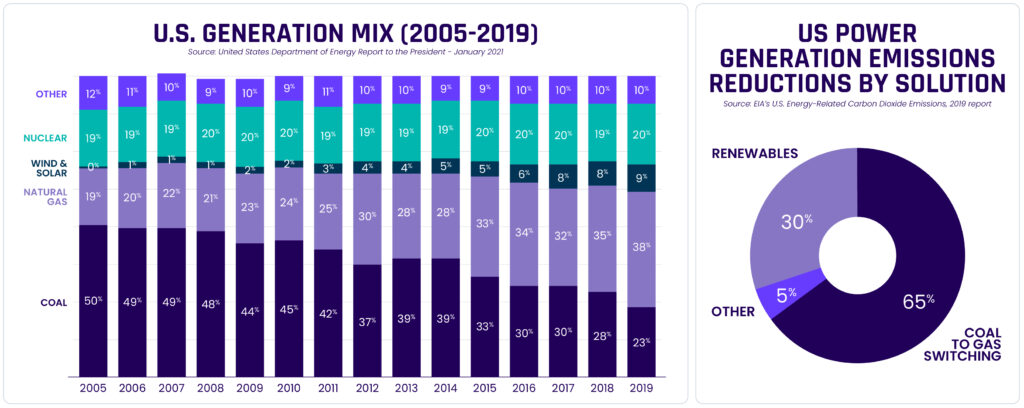New Reports Show US Natural Gas Will Be Critical to the Success of Renewable Energy
According to two new reports, natural gas will be critical in transitioning to a clean energy future.
Research by consulting firm McKinsey & Company shows that natural gas has been – and will continue to be – vital to decarbonizing the US power supply while supporting renewables.
Meanwhile, think tank Ember provides evidence that countries like China are overwhelmingly turning to highly polluting coal because of recent shortfalls in renewable energy production, particularly with the decreasing reliability of hydropower.
Fortunately, the US has the resources and the know-how to decarbonize quickly. Since 1990, the US has decreased its CO2 emissions by 8% and can lead the way in helping the rest of the world achieve its climate goals.
By increasing the export of US natural gas abroad via LNG, we can expand a proven decarbonization solution that will smooth the ups and downs of energy reliability as we transition to a renewable future.
… natural gas is more reliable than renewables and helps to phase out the production of environmentally hazardous coal.
The benefits of clean natural gas vs coal
Some environmentalists argue that renewables alone are the only path towards cleaner energy. While the rapid expansion of renewables is a noteworthy success story, renewables have clear limitations, including battery storage and transmission infrastructure problems.
According to the McKinsey report, these challenges are causing renewables to produce only an "intermittent supply" of energy that cannot reliably match growing power demands.
To generate the same amount of electricity as natural gas, solar fields require 10 to 20 times more land, while onshore wind needs up to 200 times more. Overall, significantly more significant investments will have to be made in the power grid to support the rollout of renewables.
At the same time, natural gas is more nimble and can help phase out the production of environmentally hazardous coal.
According to the US Energy Information Administration (EIA), the use of natural gas in the electric power sector increased by more than 100% between 2005 and 2022, while coal declined by about 55%. This shift from coal to natural gas has contributed to an 18% reduction in energy-related CO2 emissions in the US since 2005.
This shift also reduced an estimated 532 million metric tons of CO2 over that same period, the most significant decarbonization lever to date, mitigating 10% of 2021 US GHG emissions. By comparison, renewable generation led to 248 million metric tons of CO2e (carbon dioxide equivalent) – less than half of what coal-to-gas switching produced.
With China being the world’s largest power producer, accounting for 31% of global generation, the environmental consequences of this rise in coal production will be devastating without a significant course correction.
Natural gas will power the transition to clean energy
The global decline in hydropower demonstrates precisely why natural gas must be a part of the solution for cleaner energy.
Research published by Ember found hydro generation, the largest electricity source among all renewables, fell by a historic 8.5% margin in the first half of 2023 due to adverse conditions. This decline was especially notable in China, which accounted for approximately 75% of the global decrease in hydropower.
China began significantly expanding coal production to make up for the energy deficit. According to the Ember report, China's increase in coal generation between January and June 2023 exceeded 203 terawatt-hours (TWh) compared to that same period in 2022. Natural gas generation increased by just 10 TWh, while hydropower declined by 129 TWh.
With China being the world's largest power producer, accounting for 31% of global generation, the environmental consequences of this rise in coal production will be devastating without a significant course correction. China emits the most energy-related CO2 emissions globally and could remain in that position through 2050 as it doubles down on coal power generation.
Natural gas should fill the deficit left by coal
Fortunately, natural gas provides the ideal solution – a cleaner and more reliable energy source that can make up for the deficit caused by the decline in global hydropower.
According to the EIA, natural gas emits almost 50% less CO2 than coal while producing equal energy. The recent progress in emissions reduction in the US through coal-to-gas switching shows that this is a proven solution that can succeed in other regions, too.
And the US's plentiful natural gas supply means we can lead this movement – securing cleaner, more reliable, and affordable energy for all.
